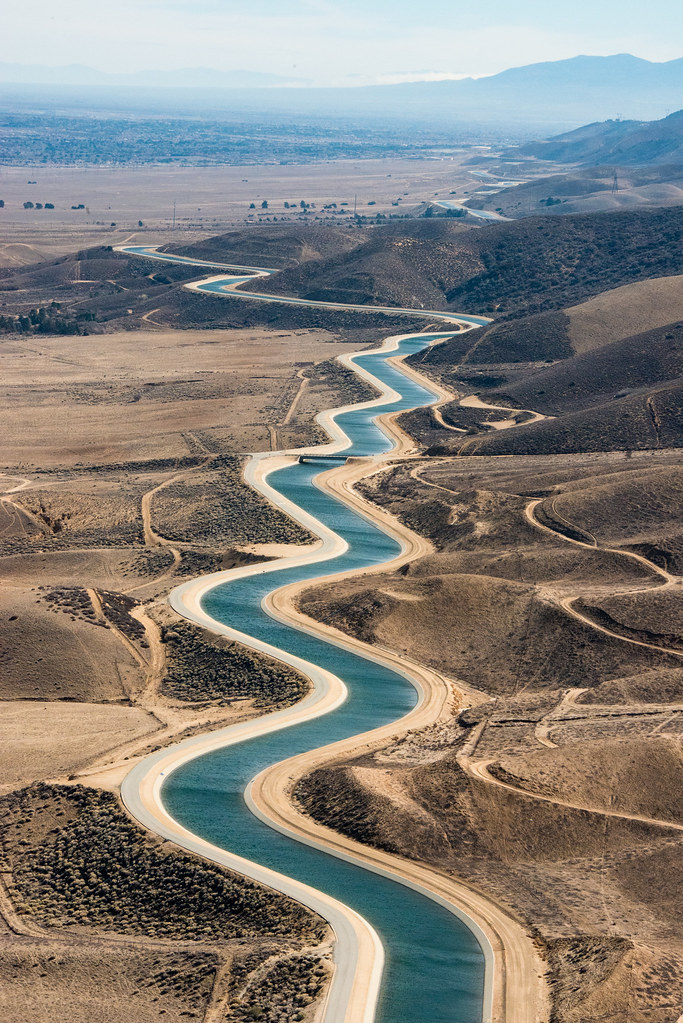By Greg Walcher
People concerned about water levels in the West’s reservoirs should be able to cheer up now. The U.S. Drought Monitor system has removed drought status from the entire Western Slope and nearly all of California. Snowpack this winter was well above average for the entire Sierra Nevada Mountain Range, and nearly 50 percent above average in the Colorado Rockies.
That should prompt a sigh of relief regarding the reservoirs. Colorado’s largest lake, Blue Mesa Reservoir, was unceremoniously drained by the Bureau of Reclamation last year, but its level has risen over 50 feet, now just 30 feet below full capacity. The U.S. Geological Survey says stream flows are at least 90 percent of average along the entire West Coast, and the Colorado River is overflowing its banks. Federal officials estimate runoff into the Colorado River reservoirs this year will be 149 percent of average.
Don’t celebrate yet. The Bureau has the gates at Blue Mesa wide open and will drain it again as fast as it can fill, in order to move the water to Lake Powell to recover some of its electric generating capacity, and especially so it can be sent downstream to Lake Mead to supply California. The agency has an apparent blind spot for California that colors its judgment about reservoir management, resulting in unfair allocations that violate the spirit of the Interstate Compact.
Years of sustained drought should remind everyone of the purpose of these reservoirs. Blue Mesa was authorized by the Colorado River Storage Project Act of 1956, shepherded through Congress by Colorado Senators Gordon Allot and Gene Milliken, and Congressman Wayne Aspinall. The law said that it “shall be constructed to a height which will impound not less than 940,000 acre-feet of water.” Today Blue Mesa is at about 566,000. The law does not say, “unless the Bureau decides to drain the lake to send water to another state.” It defies common sense to think Congress authorized these reservoirs and intended the Bureau to decide whether to fill or drain them. The expectation was that they would be filled to capacity during Spring runoffs. As we’ve said before, that cannot happen if the drain is wide open.
The greatest frustration about mismanagement of these reservoirs, though, is that it is so unnecessary – because California has better choices. Watching the Bureau’s outrageous demands on six states, while giving California a pass to continue abusing its legal entitlement, has eroded any sympathy others might have had for California’s “plight.” That’s because it has 840 miles of coastline on the Earth’s largest ocean. There is no water shortage in California that modern technology has not already solved. The issue is political; using federal authority to take water from Arizona and Colorado is cheaper and easier than developing California’s own supply. But it is wrong.
There are 14 miniscule desalination plants in California, all of which combined produce barely 89,000 acre-feet of water a year. That’s a tenth of the water Blue Mesa Reservoir holds. But has the Bureau of Reclamation even considered requiring California to further develop that water supply instead of draining Lake Mead, Lake Powell, Blue Mesa, and others? Or to use California’s massive federal funding to do so?
Last year’s big spending bill included $4 billion for water management and conservation in the Colorado River Basin, $1.2 billion of which is now promised to California as part of its latest conservation agreement. The Bureau also committed billions to study possible improvements at Glen Canyon Dam but not a nickel for California desalination projects. Not that a state with a GDP of $2.6 trillion needs help from the rest of the country’s taxpayers.
The California Coastal Commission recently permitted the Doheny Ocean Desalination Project, a $140 million system that could supply 5 million gallons a day. But it rejected the $1.4 billion Poseidon desalination project, which would have supplied 50 million gallons a day. The Commission cited, among other factors, the “high cost of the water and lack of local demand for it…” Seriously.
A Los Angeles Water and Power report says its total demand, roughly 500,000 acre feet a year, or 447 million gallons a day, will rise 25 percent by 2050. The approved Doheny project might supply about 1% of that demand. The rejected Poseidon plant could have supplied 11 percent. “California may not be able to meet these demands,” says the report.
Californians can meet that demand if they want to, and they do not need Blue Mesa Reservoir to do so.
Greg Walcher is president of the Natural Resources Group, a consulting firm specializing in energy, water, public lands, forestry, wildlife, and other environmental issues.
This article was originally published at GregWalcher.com and is republished with permission.
For more on California’s water issued, click here.
For more on Western drought, click here.


























